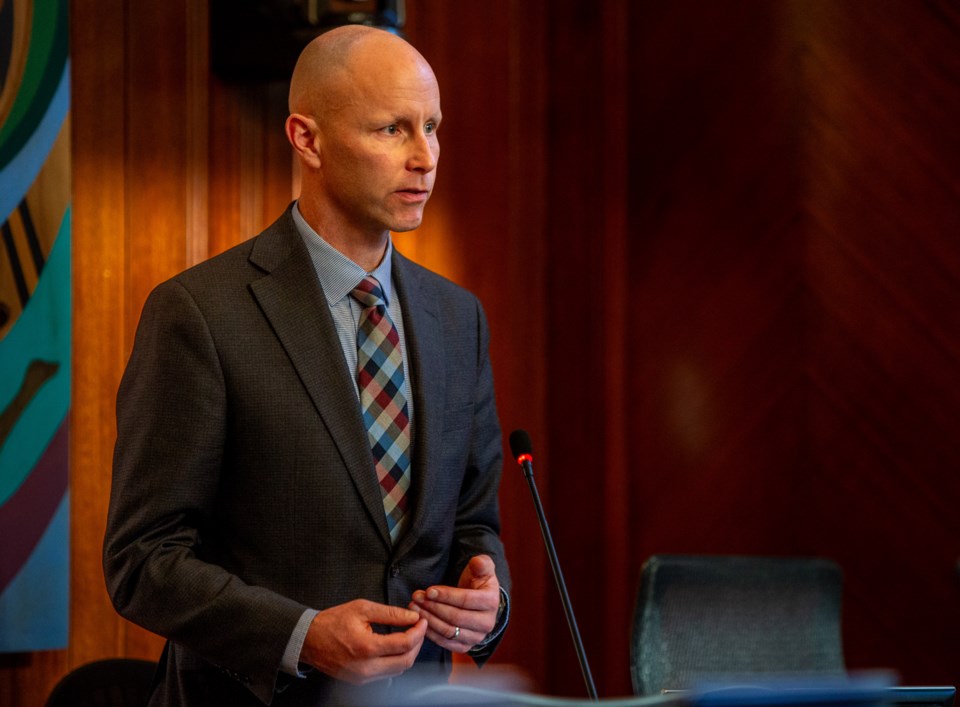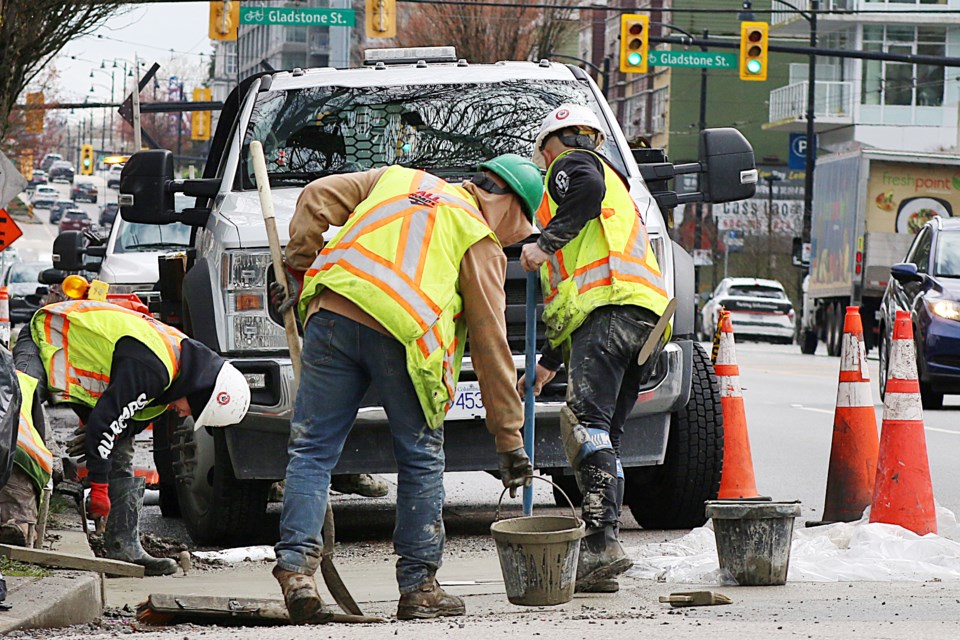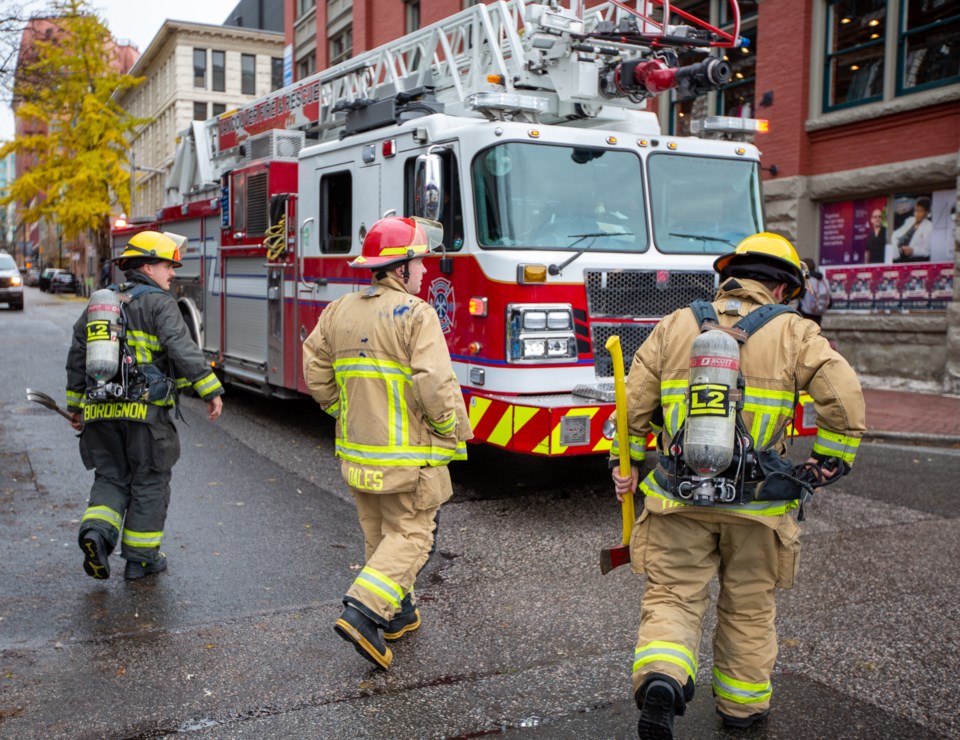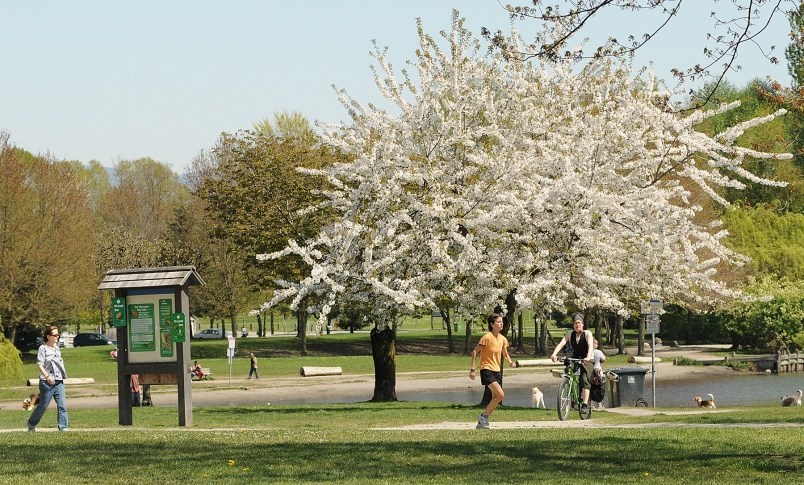The Vancouver park board has hired an “attendance management advisor” to address the ongoing concern of employees not showing up for work.
The hiring comes after the park board saw absenteeism rates increase from an already concerning percentage of 23.7 average days per employee in 2022 to 24.8 in 2024 — a rate much higher than the 18 for Vancouver police and library staff, for example.
“We do need to dig into that,” said city manager Paul Mochrie, who described the advisor’s job as a support role to assist managers and park board executive understand the reasons for an employee’s absence.
Collecting data and finding ways to get people back to work — whether that be in a modified role or different job —are efforts that are expected to reduce absenteeism, Mochrie said.
He pointed out that a big part of the work done by park board employees occurs outdoors.
“Part of it is the nature of the work they do, part of it is they have a different benefit plan in their union that includes a paid long-term disability plan,” Mochrie said.
“Not all of our employees have paid long-term disability, so there's a whole number of factors that go into that [absenteeism rate].”
The city’s communications department said in an email that reasons an employee may be absent from work include serious illnesses such as cancer, long-term disabilities, respiratory conditions, infectious diseases, mental health and injuries.
The primary reasons for employee absence from work include respiratory conditions, infectious diseases and mental health, said the city, noting absenteeism rates have yet to return to lower pre-pandemic levels.

Paid sick leave
Mochrie said the statistics shouldn’t be interpreted as otherwise healthy employees skipping work, but noted conversations are had with employees where a consistent pattern of absences is noticeable.
“There are instances in which people who cannot maintain regular attendance can be terminated from work — and we do that in extreme cases, or if we ever find any indication of fraud,” he said.
Other factors that help explain absenteeism rates are changes to the Employment Standards Act. In 2022, the provincial government granted all employees five days of paid sick leave, which the city’s temporary employees — about 2,500 — are now accessing when needed.
“Those folks now have access to paid sick leave, and obviously some folks are taking that,” Mochrie said.
During the pandemic, WorkSafeBC was accepting COVID-related claims where employees said they got COVID-19 at work, particularly with firefighters. And WorkSafe accepted all of them, “which was, frankly, a challenge for us,” Mochrie said.
Mayor's budget task force
The absenteeism statistics for park board employees appeared in a recent update to city council on recommendations identified by Mayor Ken Sim’s budget task force, which released its report in January 2024.
That report said that while some level of absenteeism is normal, with a “concerted holistic effort including safety, support and accountability, there is a significant opportunity to reduce absenteeism so that it is closer to the overall provincial average of 10 days per year per [full-time equivalent].”
City staff estimates that each day of reduced absenteeism across the board would result in savings of approximately $4.5 million per year, said the report, which was requested by Sim in an effort to find efficiencies in the city’s budget, identify potential new revenue streams and flag any duplications that may exist.
The mayor’s task force recommended the city implement a strategic initiative to proactively manage absenteeism.
“This should include a number of interrelated activities (for example, ensuring holistic employee supports are in place, updating safety and health programs and implementing time-tracking, etc.), and should include labour leadership working with department leaders in developing and implementing the necessary changes,” the report said.

'Work absence rate'
The city’s communications department clarified that the absenteeism rate used in reports isn’t the average number of days an employee is absent, but rather the percentage of time they’re absent out of their total work hours.
The calculation of the “work absence rate” is a standardized measure used by Statistics Canada to compare absence rates among employee populations with varying work schedules.
It’s calculated by dividing the total hours absent by scheduled hours for given employee groups. This percentage is then multiplied by 249, which is the number of days in a year, excluding weekends and statutory holidays.
“The absence rate is multiplied by 249 to make it easier to digest as most regular full-time employees in Canada have work schedules of 249 days per year, which excludes weekends and stats,” the city’s communications department said.

'High rate of cancer'
While park board absenteeism rates increased from 2022-24, Vancouver Fire and Rescue Services saw rates decrease — from 27.8 days in 2022 to 20.9 in 2024.
Fire Chief Karen Fry told BIV the department worked hard in the last year to bring firefighters away on sick leave back to more modified work. The department has two staff dedicated to getting firefighters back to work.
“We are a big team, and to be able to be at work and work in your team environment really does improve their wellness,” said Fry, who described firefighters as “industrial athletes,” noting the physical and mental strain to the job.
“We also know that firefighters have a really high rate of cancer, and that is a workplace injury. So we do have a lot of firefighters that are continually battling cancer.”
Added Fry: “At various times in the year, especially if there's a flu going around or something like this, we have had times where there might have been 20 [firefighters] off work sick.”
24-hour shifts
During the pandemic, the department implemented 24-hour shifts instead of the typical 10-hour day, 14-hour night shifts. Fry said the feedback from firefighters has been the 24-hour shifts are better for their mental health.
“Our people want to be at work — they love what they do,” she said. “But they know that it creates an extra burden on their teammates. When one person is absent, somebody else has to come in on a day off and work those extra shifts.”
Fry said it was important for her to ensure her staff is as healthy as they can be.
“We finally have our staffing numbers up to where they need to be, which is also important — and we're not backfilling,” she said.
“But we’ve been just trying to catch up since after COVID, but I think our department's doing a great job and we just need to continue to support [firefighters] and provide them with the resources and the benefits.”
X/@Howellings




